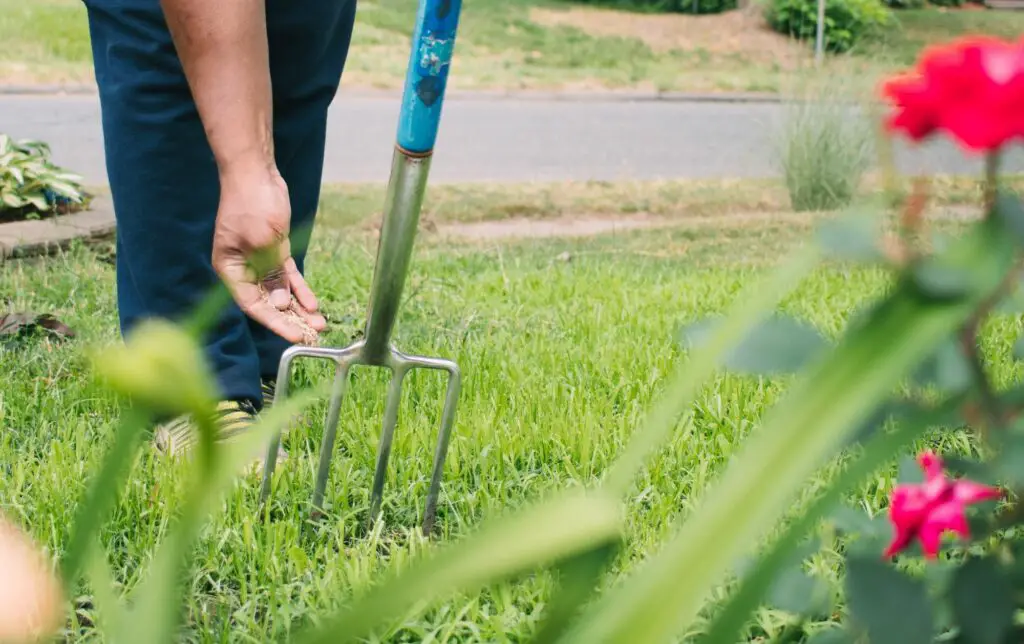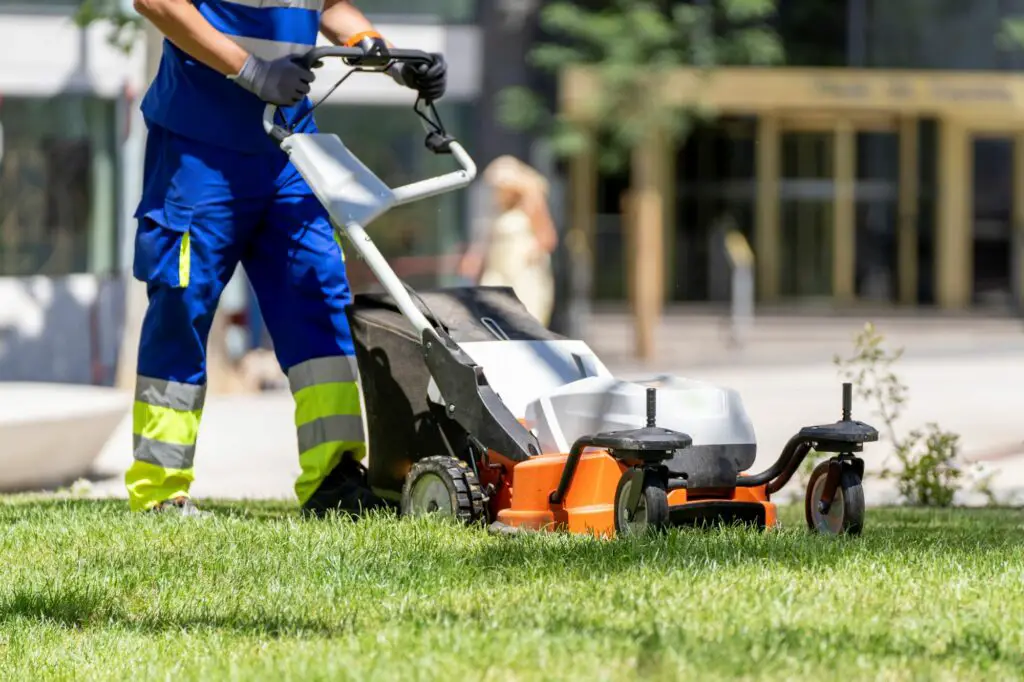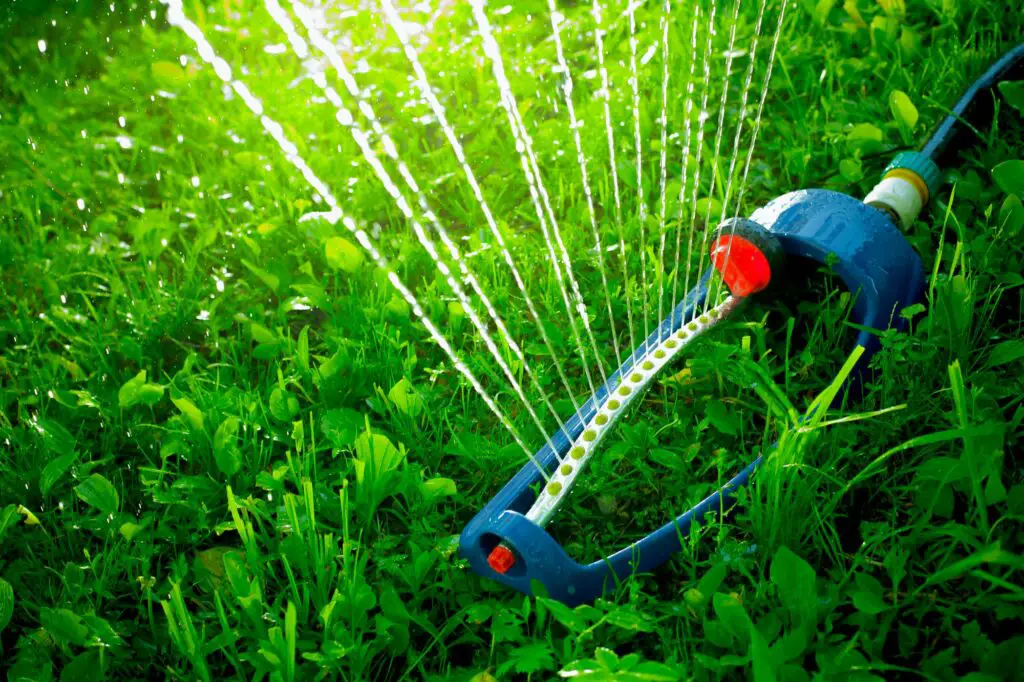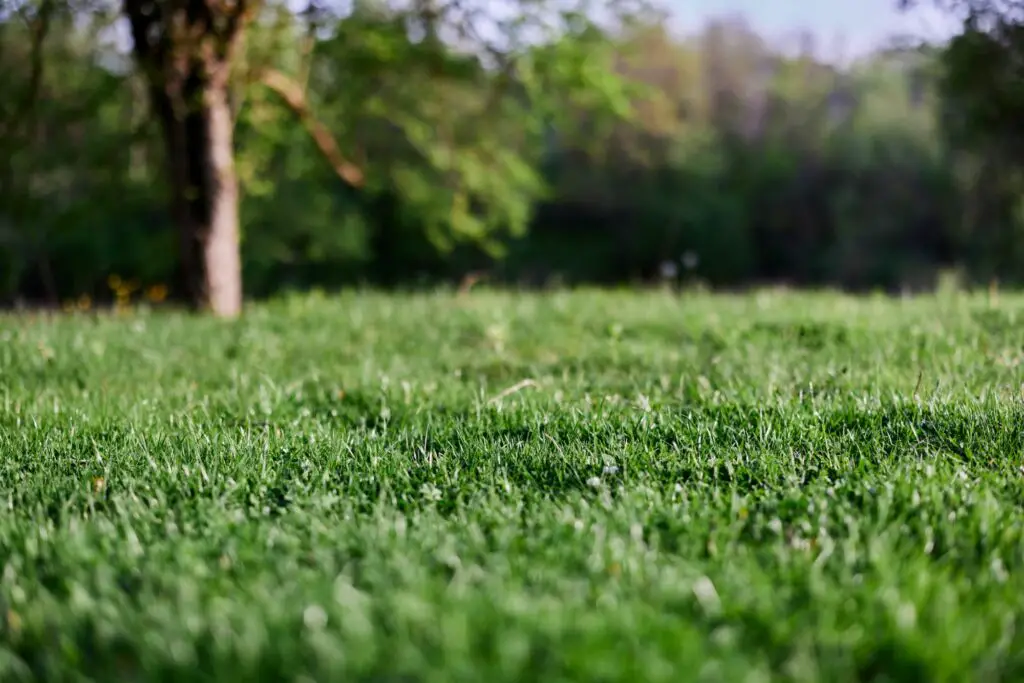When it comes to planting grass seed in Connecticut in the spring, timing is key. The state’s climate can be challenging for growing grass, with cold winters and hot summers. However, with the right knowledge and preparation, it is possible to achieve a lush, green lawn.
Connecticut’s climate is classified as humid continental, which means that it experiences four distinct seasons. Spring is a time of transition, with temperatures rising and the ground thawing after the winter months.
While it may be tempting to start planting grass seed as soon as the weather begins to warm up, it is important to wait until the soil has reached the right temperature for germination.
The ideal planting time for grass seed in Connecticut in the spring is typically between mid-April and mid-May, depending on the specific location and weather conditions. This allows the soil to warm up sufficiently for the seeds to germinate, while also avoiding the risk of frost.
By understanding the climate, types of grass seeds, and ideal planting time, homeowners can create a beautiful and healthy lawn.
Key Takeaways
- Timing is key when planting grass seed in Connecticut in the spring.
- Connecticut’s climate can be challenging for growing grass, but with the right preparation, it is possible to achieve a lush, green lawn.
- The ideal planting time for grass seed in Connecticut in the spring is typically between mid-April and mid-May.
Don’t miss other related articles!
When to Plant Grass Seed in Montana?
When to Plant Rye Grass in Florida? 7 Important Considerations
When to Plant Grass Seed in Houston?
When to Plant Grass Seed in Idaho?

Understanding Connecticut’s Climate
Connecticut has a humid subtropical climate with four distinct seasons – spring, summer, fall, and winter. The state has an average annual temperature of 52°F and receives an average annual precipitation of 48 inches.
The climate in Connecticut is heavily influenced by the Atlantic Ocean, which moderates the temperatures throughout the year.
In the spring, temperatures in Connecticut start to warm up, and the snow begins to melt. The average temperature during the spring months is around 50°F to 70°F. The weather during spring is often unpredictable, with occasional rain showers and thunderstorms.
However, the spring season is an excellent time to plant grass seed in Connecticut.
During the summer months, the temperature in Connecticut rises, and the state experiences hot and humid weather. The average temperature during the summer months is around 70°F to 90°F. The state also experiences occasional thunderstorms and heavy rainfall during the summer months.
In the fall, the temperature in Connecticut starts to drop, and the leaves on the trees begin to change color. The average temperature during the fall months is around 50°F to 70°F. The fall season is also an excellent time to plant grass seed in Connecticut.
During the winter months, Connecticut experiences cold and snowy weather. The average temperature during the winter months is around 20°F to 40°F. The state also experiences occasional blizzards and snowstorms during the winter months.
Types of Grass Seeds
When it comes to planting grass seed in Connecticut during the spring, there are several types of grass seeds to choose from. Each type of grass has its own unique characteristics, so it is important to choose the right one for your lawn. Here are some of the most common types of grass seeds:
Kentucky Bluegrass
Kentucky Bluegrass is a cool-season grass that is popular in Connecticut. It has a lush and dense appearance, making it a great choice for lawns. This grass seed can withstand cold winters and recovers quickly in the spring when mixed with other grass seeds.
It is also resistant to drought and disease, making it a low-maintenance option for homeowners.
Perennial Ryegrass
Perennial Ryegrass is another cool-season grass that is commonly used in Connecticut. It is known for its fast germination and quick establishment, making it a popular choice for overseeding existing lawns. This grass seed is also tolerant of heavy foot traffic, making it a great option for families with children or pets.
Tall Fescue
Tall Fescue is a cool-season grass that is known for its durability and low maintenance requirements. It is an excellent choice for lawns that receive a lot of foot traffic or are exposed to harsh weather conditions. This grass seed is also resistant to disease and drought, making it a great option for homeowners who want a low-maintenance lawn.
Bermuda Grass
Bermuda Grass is a warm-season grass that is commonly used in southern Connecticut. It is known for its ability to withstand heat and drought, making it a great choice for lawns in hot and dry climates. This grass seed is also tolerant of heavy foot traffic, making it a great option for families with children or pets.
Zoysia Grass
Zoysia Grass is another warm-season grass that is popular in southern Connecticut. It is known for its ability to withstand heat and drought, making it a great choice for lawns in hot and dry climates. This grass seed is also resistant to disease and pests, making it a low-maintenance option for homeowners.
Overall, there are many different types of grass seeds to choose from when planting a lawn in Connecticut during the spring. Homeowners should choose a variety of grass seed that is best suited for their lawn’s specific needs and requirements.

Ideal Planting Time for Grass Seeds
When it comes to planting grass seeds in Connecticut, timing is everything. The ideal planting time for grass seeds in CT is in early spring or early fall. Planting in late summer or October is also possible, but it may require extra care and attention.
Late winter is also a good time to plant grass seeds, but it is best to wait until the soil has thawed and dried out a bit. Planting too early in the season can lead to seeds rotting in the soil due to the excess moisture.
Timing is crucial when planting grass seeds. Planting too early or too late in the season can result in poor germination rates, which can lead to a patchy lawn. The ideal soil temperature for planting grass seeds is between 50 and 65 degrees Fahrenheit, which typically occurs in early spring and early fall.
It is essential to keep in mind that different types of grass have different optimal planting times. For example, cool-season grasses, such as Kentucky bluegrass and fescue, thrive in cooler temperatures and should be planted in early spring or early fall.
Warm-season grasses, such as Bermuda grass and zoysia grass, prefer warmer temperatures and should be planted in late spring or early summer.
Understanding Soil Conditions
When it comes to planting grass seed in Connecticut, understanding soil conditions is crucial for success. The soil pH level, moisture, organic matter, and texture all play a significant role in the growth and development of grass seed.
Soil pH Level
The pH level of the soil is an essential factor to consider when planting grass seed. Connecticut soils tend to be naturally acidic, with a pH level between 4.5 and 5.5. However, most grasses prefer a pH level between 6.0 and 7.0.
Therefore, it is necessary to adjust the soil pH level before planting. Adding lime to the soil can help raise the pH level, while adding sulfur can help lower it.
Moisture and Organic Matter
Moisture is another critical factor to consider when planting grass seed. Soil that is too dry can prevent seeds from germinating, while soil that is too wet can drown the seeds.
It is important to ensure that the soil is moist but not waterlogged. Adding compost or organic matter to the soil can help retain moisture and provide nutrients for the seedlings to grow.
Soil Texture
The texture of the soil also plays a role in the growth of grass seed. Connecticut soils can be sandy, loamy, or clayey. Sandy soils drain quickly and do not retain moisture well, while clayey soils hold onto water and can become compacted.
Loamy soils are ideal for planting grass seed because they provide good drainage and moisture retention.
Soil Temperature
Soil temperature is another factor to consider when planting grass seed. Cool-season grasses, which are the most common in Connecticut, prefer soil temperatures between 50 and 65 degrees Fahrenheit. Therefore, it is best to plant grass seed in the early spring when the soil has warmed up enough for germination.
Soil Testing and Preparation
Before planting grass seed, it is recommended to test the soil to determine its pH level, nutrient content, and texture. Soil testing can help identify any deficiencies or imbalances in the soil, allowing for proper amendments to be made before planting.
Proper soil preparation, including tilling and removing any debris, can also help ensure successful grass seed growth.

Site Preparation for Planting
Before planting grass seed in CT in the spring, it is important to properly prepare the site. This will ensure the best possible conditions for seed germination and growth. The following steps should be taken to prepare the site:
Clear the Area
The first step in preparing the site is to clear the area of any debris, rocks, or other obstacles. This will help ensure that the grass seed has a clear and level surface to grow on. It is also important to remove any existing grass or weeds from the area to prevent competition for nutrients and water.
Level the Site
After clearing the area, the site should be leveled to ensure an even surface for planting. This can be done using a garden rake or a leveling tool. It is important to avoid creating any low or high spots, as these can lead to uneven growth and an unsightly lawn.
Aerate the Soil
If the soil is compacted, it may be necessary to aerate the soil before planting grass seed. This will help to loosen the soil and improve drainage, which will promote healthy root growth. Aeration can be done using a garden fork or a mechanical aerator.
Add Soil Amendments
If the soil is lacking in nutrients, it may be necessary to add soil amendments before planting grass seed. This can include organic matter such as compost or manure, as well as fertilizers. It is important to follow the manufacturer’s instructions when applying fertilizers, as over-application can lead to burning of the grass seedlings.
Water the Site
Before planting grass seed, it is important to water the site thoroughly. This will help to ensure that the soil is moist and ready for planting. It is important to avoid over-watering, as this can lead to water-logged soil and poor seed germination.
Grass Seed Germination Process
Grass seed germination is the process of a seed growing into a mature plant. The germination process starts when the seed absorbs water and swells. The seed coat then splits, and the root emerges from the seed. The root then grows down into the soil, while the shoot grows up towards the surface.
The germination process of grass seed is affected by many factors, including temperature, water, and soil conditions. For example, the ideal temperature for germinating cool-season grasses is between 50 and 75 degrees Fahrenheit. If the temperature is too hot or too cold, the seed may not germinate at all or may germinate slowly.
Water is also important for seed germination. The soil should be moist but not saturated. If the soil is too dry, the seed may not absorb enough water to start the germination process. Overwatering can also be detrimental to the germination process, as it can lead to fungal growth and root rot.
Proper irrigation is crucial for successful seed germination. The seedbed should be kept moist until the grass seedlings emerge. After emergence, the soil should be allowed to dry out slightly before watering again. This encourages the seedlings to develop deep roots, which will help them survive periods of drought.

Lawn Care After Planting
Once the grass seed has been planted, it is important to take proper care of the lawn to ensure that the seeds germinate and grow into a healthy turf. Here are some tips for lawn care after planting:
Watering
Watering is crucial during the first few weeks after planting. The soil should be kept moist but not waterlogged. The best time to water is early in the morning or late in the afternoon.
Watering during the hottest part of the day can cause the water to evaporate before it reaches the roots. A sprinkler system or a hose with a sprinkler attachment can be used to water the lawn.
Mowing
Mowing should be done once the grass reaches a height of about 3 inches. The mower blade should be set to a height of about 2 inches. Mowing too short can damage the grass and make it more susceptible to weeds and diseases. It is also important to mow the lawn regularly to prevent the grass from becoming too long and to keep it looking neat.
Fertilizing
Fertilizing can help the grass grow strong and healthy. A slow-release fertilizer can be applied about 6 weeks after planting. It is important to follow the instructions on the fertilizer package and not to over-fertilize, as this can damage the grass.
Maintenance
Regular maintenance is important to keep the lawn looking healthy. This includes removing any weeds that may appear, as well as checking for pests and diseases. Perennial weeds can be difficult to control and may require professional help.
Overseeding
Overseeding can help fill in any bare spots in the lawn. This can be done in the fall or spring, but it is important to wait until the new grass is established before overseeding.
Additional Considerations
When it comes to planting grass seed in Connecticut in the spring, there are a few additional considerations to keep in mind. Here are some key factors to consider:
Sun and Shade
Before planting grass seed, it’s important to assess the amount of sun and shade in the area where you plan to plant. Different types of grass thrive in different conditions, so it’s important to choose a seed mix that is appropriate for the amount of sun and shade in the area.
For example, if the area is mostly shaded, a mix of fine fescue and Kentucky bluegrass may be more appropriate than a mix of tall fescue and perennial ryegrass.

Sod vs. Seeding
Another factor to consider is whether to use sod or seed to establish a new lawn. While sod can provide an instant, established lawn, it can be more expensive and may not be practical for larger areas. Seeding a lawn may take longer to establish, but it can be more cost-effective and allows for more control over the type of grass used.
Amendments
It’s also important to consider soil amendments before planting grass seed. Adding organic matter, such as compost or peat moss, can improve soil structure and fertility, which can help promote healthy growth and establishment of the grass seed.
Watering and Drying Out
Proper watering is essential for the establishment of new grass seed. During the germination period, the soil should be kept moist but not waterlogged. If the soil dries out, the grass seed may not germinate or may die off.
It’s important to monitor the soil moisture and water as needed to ensure the seedlings have the best chance of survival.
Appearance and Neighborhood
Finally, it’s important to consider the appearance of the lawn and how it will fit in with the surrounding neighborhood. Choosing a grass seed mix that is appropriate for the local climate and soil conditions can help ensure a greener, healthier lawn.
Additionally, using a spreader to evenly distribute the seed and straw to protect the seedlings can help improve the appearance of the lawn and ensure a more successful establishment.
Frequently Asked Questions
What is the best time to plant grass seed in Connecticut in the spring?
The best time to plant grass seed in Connecticut in the spring is between mid-April and mid-May, after the last frost. Planting during this time will give the grass seed enough time to germinate and establish itself before the hot summer months.
When should I start planting grass seed in the spring in CT?
You should start planting grass seed in the spring in CT as soon as the soil temperature reaches around 55°F. This temperature is ideal for grass seed germination. However, it is important to wait until after the last frost to avoid damaging the young seedlings.
Can grass seed be planted in March in CT?
It is not recommended to plant grass seed in March in CT because the soil is still too cold for the seed to germinate properly. It is best to wait until mid-April to mid-May when the soil temperature has warmed up enough for successful germination.
What is the best grass seed for overseeding in Connecticut in the spring?
The best grass seed for overseeding in Connecticut in the spring depends on the specific conditions of your lawn. However, some popular grass seed options include Kentucky bluegrass, perennial ryegrass, and tall fescue. It is recommended to choose a seed that is appropriate for your region and soil type.
Should I plant grass seed or fertilizer first in the spring in CT?
It is recommended to plant grass seed first in the spring in CT and then apply fertilizer. This will allow the grass seed to establish itself before the fertilizer is applied, which can help prevent burning or damaging the young seedlings.
Will grass seed grow in the spring if planted in winter in Connecticut?
Grass seed will not grow in the spring if planted in winter in Connecticut because the soil temperature is too cold for germination. It is best to wait until mid-April to mid-May to plant grass seed in Connecticut in the spring.

Hey, I’m Lisa and I’ve been an avid gardener for over 30 years. I love writing, talking and living in the garden! Feel free to connect with me on my socials below

